In 1954, a curious structure was discovered in the northwest of the island of Sardinia, near the town of Porto Torres:a huge stone platform whose oldest parts date from around 4000-3650 BC, that is, before, for example, Stonehenge, and about a thousand years older than the pyramids of Egypt. It is not in vain that today it is described as the most unique cultural monument of the early years of the western Mediterranean .
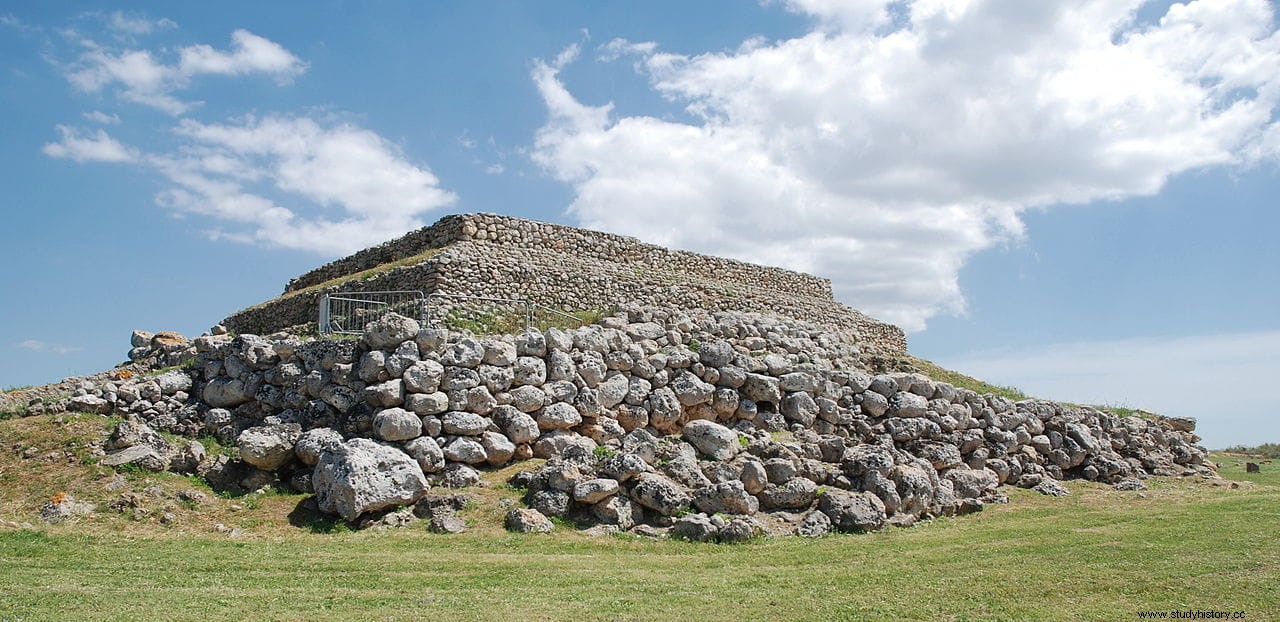
It is unknown who was able to build that first structure, the base of what appears to be an altar or a stepped pyramid, without the researchers agreeing on its original function. Some point to the Ozieri culture, a pre-Nuragic culture that developed in Sardinia in the late Neolithic, but others believe it may be even older.
This base has dimensions of 27 by 27 meters, with a height of 5.5 meters, culminating in a rectangular room of about 12.5 by 7.2 meters accessible by means of a ramp, known as the Red Temple , since most of the surfaces are plastered and painted in ochre, with traces also of yellow and black. However, no chambers or access holes to the interior of the structure have been found, which makes experts think that it would be a kind of altar. Based on the fact that the original square plan is perfectly aligned with the cardinal points, some believe that it could have had an astronomical function, of observation.
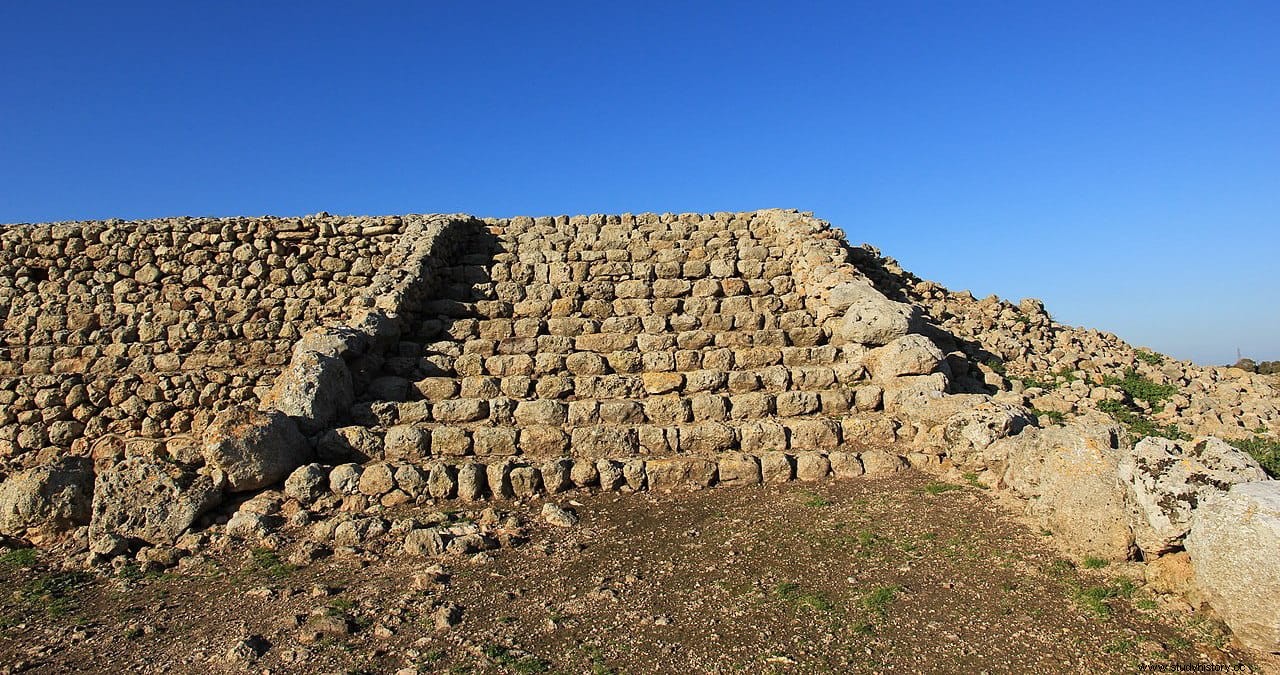
Among the latter, Eugenio Muroni formulated a theory according to which the symmetry of the pre-Nuragic altar would reproduce the stars of the Southern Cross, today not visible from the site of Monte d'Accoddi due to the precession of the equinoxes, but which makes 5,000 years was certainly visible in the southern sector of the Sardinian sky.
That initial structure, perhaps built by the Ozieri culture, was abandoned or destroyed around 3000 BC. Traces of fire have been found in the archaeological record. Around the year 2800 B.C. the remains of the original structure were completely covered with a mixture of layers of earth and stone, and large blocks of limestone were placed on top of it to establish the second platform, truncated by a stepped pyramid 36 by 29 meters and some 10 meters high. height, which can be accessed by means of a second ramp 41.80 meters long, built on top of the older one. This second temple or altar resembles contemporary Mesopotamian zigzurats, and is attributed to the Abealzu-Filigosa culture, already in the Chalcolithic.
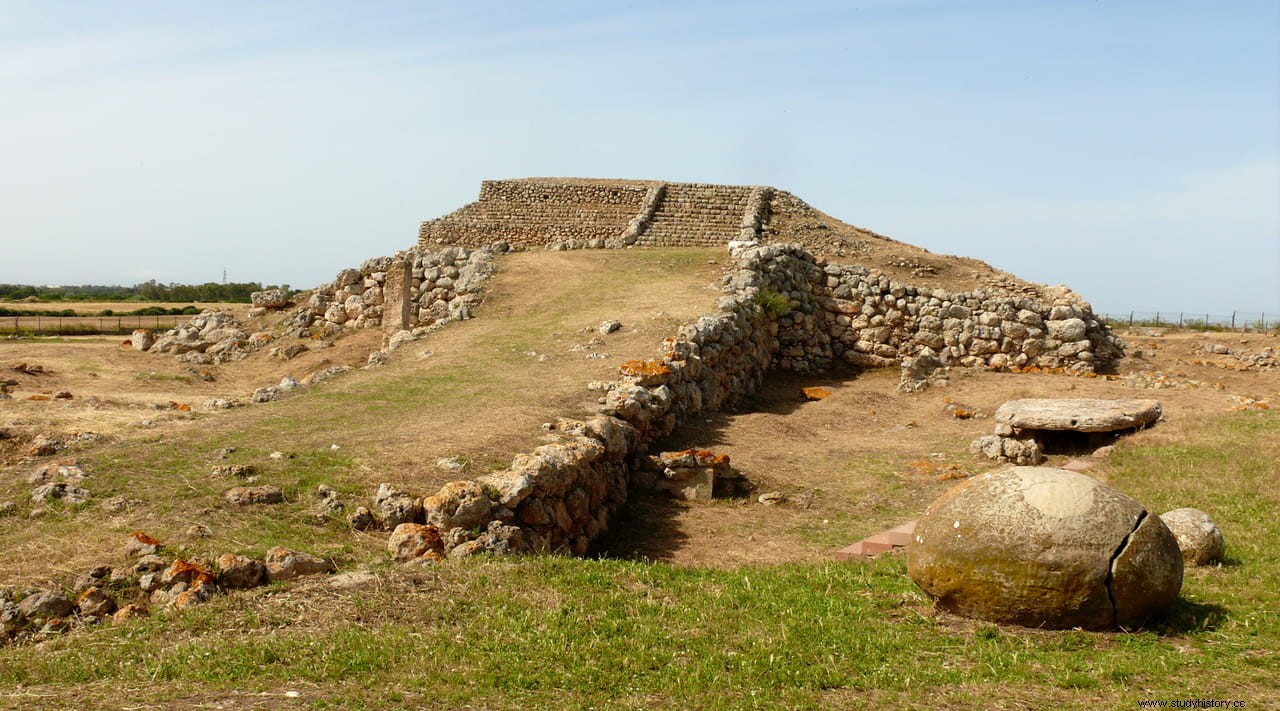
Archaeological excavations of the layers of this Chalcolithic period at the site reveal that Monte d'Accoddi was used for animal sacrifice, as large accumulations of remains of ancient sacred meals and also objects used during propitiatory rites have appeared, remains of sheep, cattle and pigs in almost equal proportions. It would therefore be one of the first known places of sacrifice in Western Europe.
The monument was abandoned again around 1800 BC, with the beginning of Sardinia's Nuragic era that would last until the Roman conquest, although it continued to serve as an occasional burial place.
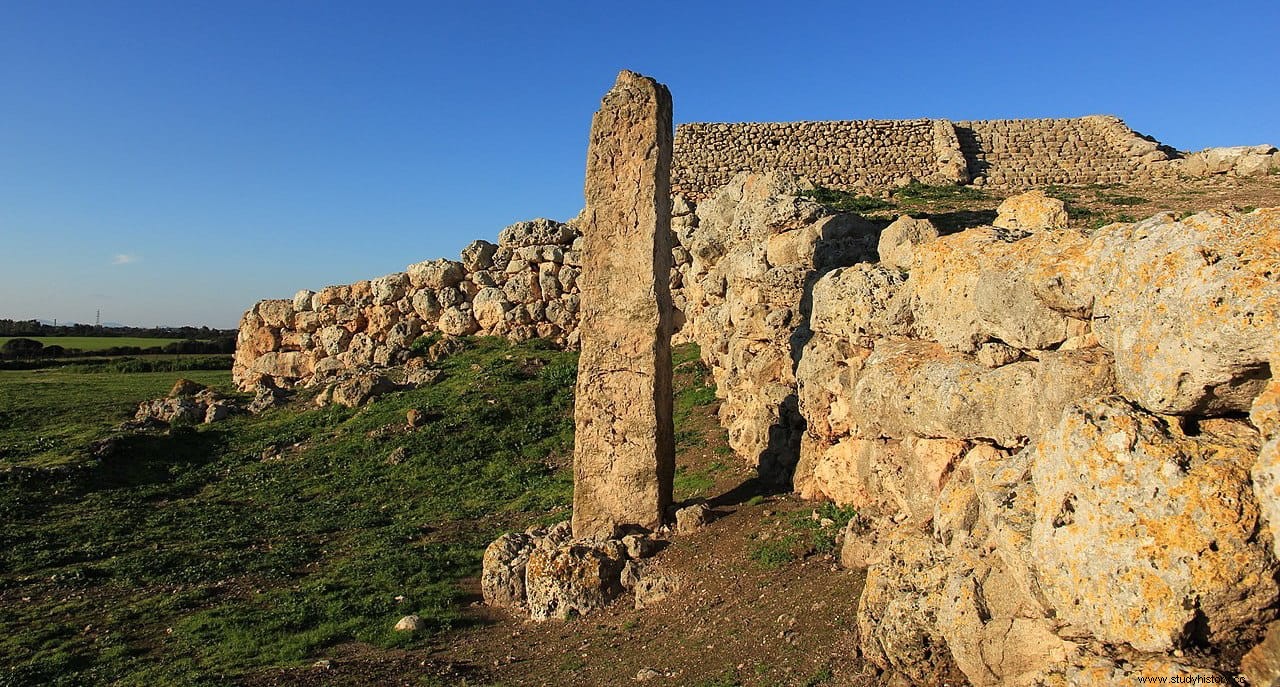
During World War II, anti-aircraft batteries were installed on it, considerably damaging the upper structure by creating ditches.
Archaeological excavations since its discovery in 1954 found other interesting remains in the surroundings of the structure. For example, near the southeast corner of the platform is a dolmen, while on the other side of the ramp stands a menhir. In addition, the foundations of several smaller structures were discovered, as well as carved stones of different sizes and shapes, the meaning of which is still a mystery to researchers.
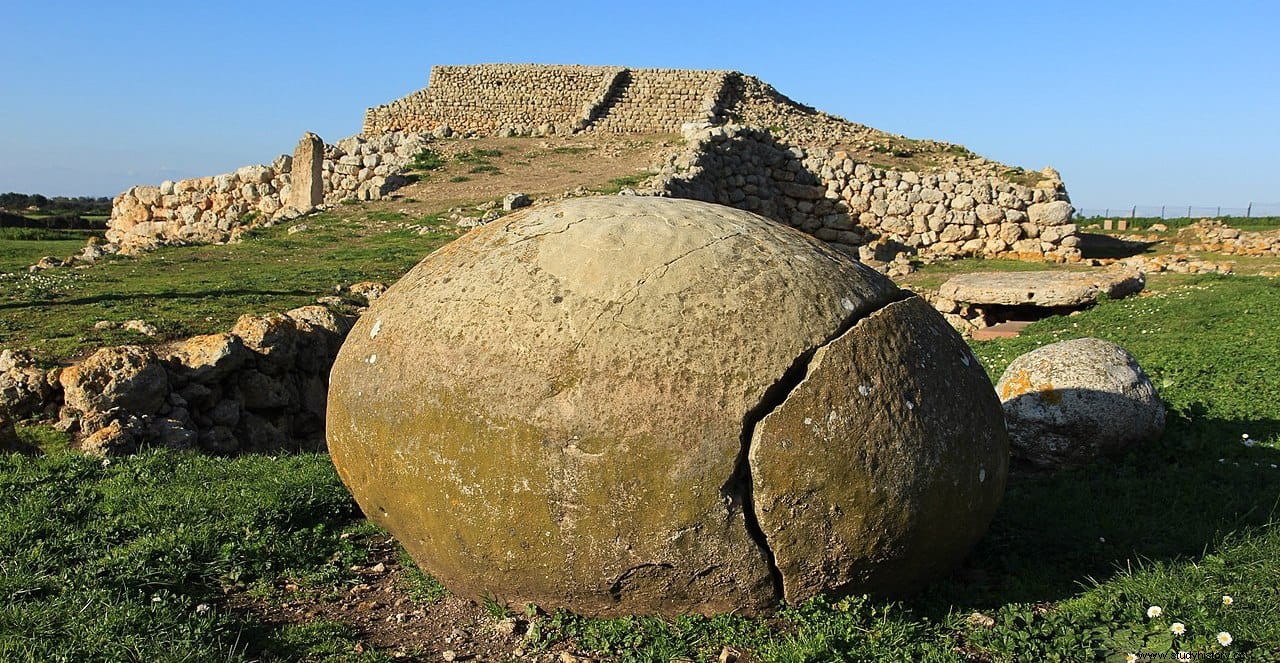
Some have wanted to see in the structure of Monte d'Acoddi similarities with the Millares complex in Almería, and also with the Balearic talayots. Others believe that the similarities with the Mesopotamian ziggurats, which are around the same time, are due to cultural influences from the Eastern Mediterranean. What is certain is that a similar structure has not been found anywhere else in the Mediterranean.
The monument was partially rebuilt during the 1980s and is open to the public.
